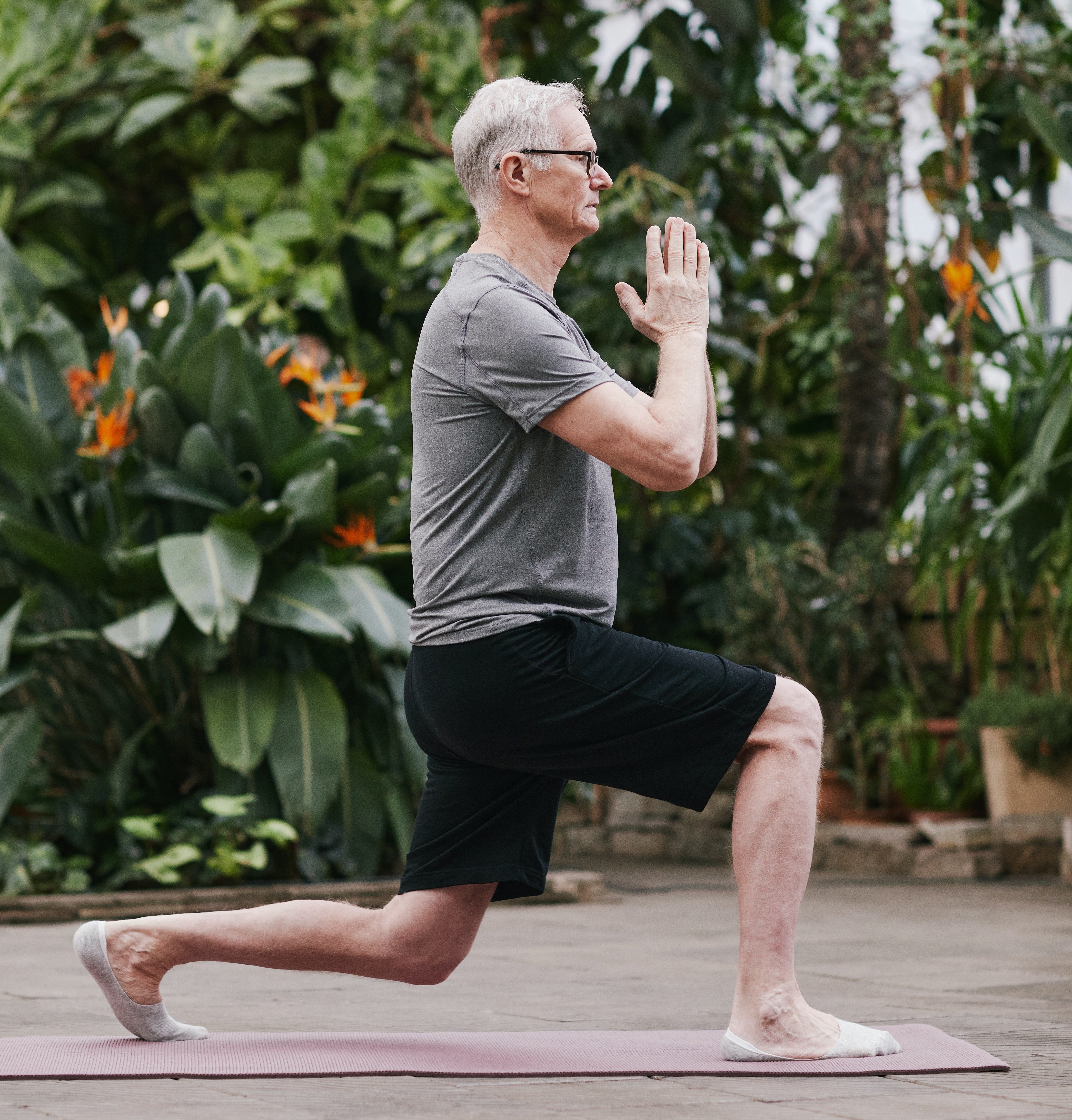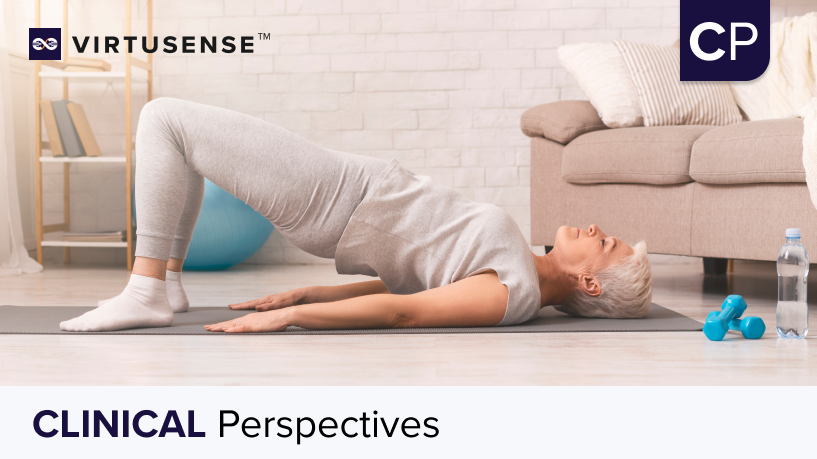Originally published August 2022. Updated August 2024.
As we age, maintaining lower body strength becomes crucial for overall health and well-being. Proactive fall prevention for seniors is an essential aspect of healthy aging, and strengthening the lower body plays a significant role in this process.
This article explores the importance of lower body strength, the systems contributing to balance, and exercises that can help improve strength and reduce the risk of falls.
Understanding Balance and Fall Risk for Seniors
There are three officially recognized systems that contribute to a person's balance and fall risk:
- Vision: What we see and our orientation to the horizon help us maintain balance.
- Proprioception: This system of receptors in our joints tells our brain what positions joints are in, aiding in stability.
- Vestibular System: Our inner ear acts as an internal gyroscope, helping us stay upright.
These systems work together to feed the brain thousands of data points every second to keep us standing upright. Without them, we would face significant health problems related to injurious falls, functional mobility, and decreased community ambulation. More importantly, decreased balance and increased fall risk are highly associated with a decline in overall health and mortality rate.
The Role of Baseline Testing
Since balance is such a key contributor to healthy aging, it is important to receive baseline testing. This is especially important for seniors who are at a higher risk of falls. If one of these systems is not working properly, seeking an accurate and fast fall risk assessment from a qualified healthcare provider is crucial. These systems can be improved with specific therapies and exercises tailored to individual needs.
Related Read: 5 Times Sit-to-Stand: A Predictor for Fall Risk
The Unofficial Fourth Factor: Strength and Muscle Coordination
The unofficial balance system that almost always gets overlooked is strength and muscle coordination. In fact, it is sometimes considered the unofficial fourth system of balance. If we lack core stability, lower extremity strength, and the ability to coordinate muscle groups, then staying upright and walking can be very challenging.
Think about this for a moment: If all of our systems that maintain our joint positioning, angular velocity, pitch, yaw, and head positioning are working perfectly, how effective are these systems if we do not have the strength to properly execute decisions made by our brain? Lower extremity strength is the motor or power that literally moves us. Think of the three balance systems as the computer circuitry and the muscles as the battery that brings those systems to life.
It is critical to maintain lower extremity strength as we age. Numerous studies suggest that lower body strength contributes to lower mortality rates and cognitive function. Strength training exercises not only improve balance and coordination but also enhance overall quality of life.

3 Lower Body Strengthening Exercises for Beginners
The stronger you are today translates to fewer problems in the future. So the time to act is now, not when problems begin to arise. By that time, it may be too late.
Let's look at three easy steps to begin a simple activity program that can help strengthen your lower legs and core.
1. Begin a Walking program
Walking is a low-impact exercise that can significantly improve lower body strength and balance. If you can’t walk very far, start small. Walk around the house, up and down the hallway, or around the table or couch. Once you feel more confident, move to the driveway or sidewalk. Increase your distance and time slowly over a period of weeks. Walking regularly not only strengthens muscles but also promotes cardiovascular health and mental well-being.
2. Climb Stairs
Stair climbing is a quick, easy way to build quad, glute, and lower back strength. It is also demanding for your cardiovascular system, challenging it, and improving its function. Start with just 1-4 steps in a row. Ascend and descend them in a safe manner. As you grow stronger, work your way up an entire flight of stairs. Eventually, do multiple flights in a row. Stair climbing is a proven, practical exercise that can be incorporated into daily routines, providing a convenient way to enhance lower body strength.
3. Engage in Lower Body Strength Exercises
Engage in exercises like calf raises, glute squeezes, bridges, hip abduction, and mini lunges. These beginner exercises can all be performed in your own home, as long as you hold on to a sturdy countertop for safety and take things slow.
Start with five repetitions of each. Work your way up to three sets of five and eventually three sets of 10. If that becomes too simple, join an exercise group (something that will also help you make new friends and stay motivated to keep up with your practice).
Additional Tips for Fall Prevention for Seniors
In addition to lower body strengthening exercises, consider these tips for older adult fall prevention:
- Maintain a Healthy Diet: Ensure you're getting enough calcium and vitamin D to support bone health.
- Regular Check-ups: Visit your healthcare provider regularly to monitor and manage any chronic conditions.
- Wear Proper Footwear: Choose shoes with good grip and support to prevent slips and falls.
- Modify Your Home Environment: Remove tripping hazards, install grab bars in bathrooms, and ensure adequate lighting throughout your home.
- Stay Socially Active: Engage in activities that keep your mind sharp and improve your mood, such as joining clubs or participating in community events.
Start Now to Prevent Falls, Maintain Independence in the Future
Fall prevention for seniors is an essential aspect of maintaining independence and quality of life. By focusing on lower body strength and implementing the exercises and tips mentioned above, seniors can reduce their risk of falls and improve their overall health. Remember, the stronger you are today, the fewer problems you'll face in the future. The next step is yours!


